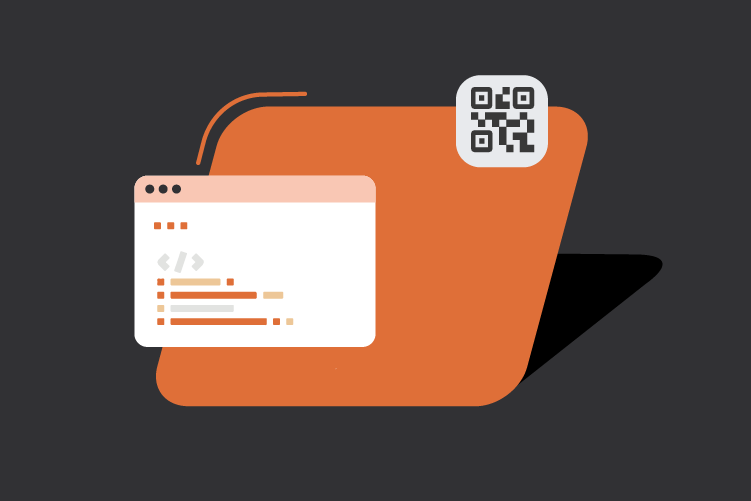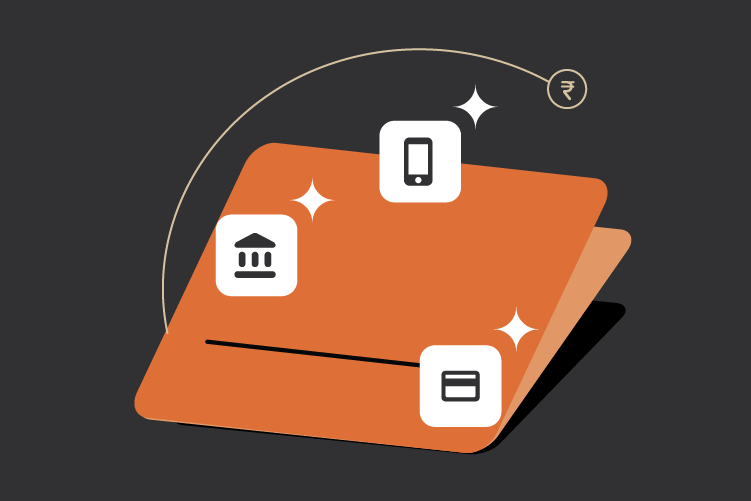To explain what embedded finance is, let’s start with what ‘Embed’ means in definitions. It means – to deeply fix an object or a service in an ongoing system. Now let’s add ‘Finance’ to it, that’s when it means ‘to include finance in an ongoing operational system.’ Yes, as simple as it sounds, that’s what embedded finance means. And this is the new wave in fintech that is fast changing the way you and I experience finance today.
What is embedded finance?
Embedded finance is about enabling your business to manage and sell innovative financial services; seamlessly integrating creative forms of payment, debit, credit, or even investment across business functions and user journey.
Embedded finance offers a huge opportunity for non-bank merchants to get closer to their customers, open up new revenue streams and completely change how their users interact with money. With embedded finance, financial services can turn into customer acquisition and retention channels, opening up hundreds of opportunities for brands to reimagine their relationship with their customers.
Brands can access financial tools and services offered by embedded finance providers and use them to build financial products without having to spend a lot of time on building one and get into the nitty- gritty of banking regulations, compliance costs . It allows every brand and every app to offer financial services within their existing products.

In turn, firms from practically every sector we can imagine can now incorporate banking and financial products embedded directly onto their platforms. Here are a few embedded finance examples to give you a quick reference from your day to day experience:
- Marketplace software vendors like Shopify offering Payments, credit & bank accounts as a service as service directly to their users
- Ridesharing companies like OLA offering seamless digital wallet & pay later options to customers and to both customers and drivers
- Consumer-focused fintech like PhonePe and Paytm– expanding their functionality through mutual funds and credit offerings for both merchants & customers
- Large consumer technology companies like Facebook and Amazon– offering digital wallets, P2P payment services, lending, credit and debit cards to their end-users
Simply put, it’s when a non-financial brand offers financial service to create a far more seamless and customized customer experience.
How does embedded finance work?

Use cases like that I’ve mentioned above have dominated our use of embedded finance so far. But the ‘movement’ is taking off and is starting to go beyond merely creating more convenient checkout experiences for consumers, transforming lending, investments, and other financial services.
Why should you be paying attention to embedded finance?
Embedded finance is expected to fetch a potential of 5x the revenue per customer for every brand to consider. Some predict the global embedded finance market size will be worth a stunning $7 Trillion by 2030. Hence goes without saying that embedded finance is undoubtedly one of the hottest trends the economy is to experience in the coming decade.
We believe that any startups today can move into financial services.

By embedding financial services, the companies deploying them can learn valuable information about their stakeholders, enabling them to offer more targeted services and retain, engage and monetize users more advantageously.
It’s a win-win-win for everyone involved:
1. Banks benefit by white labeling their services & earning on customers that they may not have otherwise gotten
2. Consumers benefit because they’ll get a more seamless & convenient experience with the merchant. They’ll not need to stop whatever that they are doing, access financial services & then go back to the merchant to complete their purchase or whatever they sought from the merchant
3. Merchants benefit because it builds a smooth stream of income, costs a lot cheaper, and simultaneously improves the conversion rate
Benefits of integrating embedded finance
1. More control over the payment process
One of the main benefits of having control over financial services in your platform is controlling the customer`s checkout journey. Instead of redirecting customers to third-party pages, companies can now ensure the entire process happens under one “digital roof.”
Not only does this translate into a better payment experience, but companies are in a better position to understand the payment habits of their customers.
Companies can also improve financial interaction across functions like vendors, sellers. By controlling the banking journey, merchants can offer customized solutions that will be better suited for faster settlements.
2. Financial Automation
Book Keeping is one of the most important operations a company does in day to day activity. In today’s date most of the financial operations are done manually which usually result in an entry error, loss of a receipt, or accidentally account for a payment that isn’t a business expense at all and causes major issues in auditing the business activity.
Through embedding financial APIs companies can automate record keeping that can prevent overdraft fees, bounced cheques, and show patterns of spending and cash inflow, which can be useful in operational plans and also flag the fraudulent activities if the company account is compromised.
3. New stream of revenue
Adding a layer of fintech allows companies to add new revenue streams. For instance, offering credit cards can help companies earn a part of the annual fee and interchange revenue from each customer.
Lending services, as Buy Now Pay Later, can help them earn revenue in the form of interest payments. For payments happening within the platform, the company could charge a nominal transaction fee.
4. Positive customer experience
Platforms can choose to focus on specific customer pain points. Consequently, they can provide more customized and frictionless solutions. It is convenient for a user to buy products related to a main purchase from the same source instead of having to interact with three distinct businesses over the course of a day.
Embedded finance providers have identified and created easy-to-use, relevant, and attractive financial offerings. Moreover, features like high security and the ability to scale which lead to a positive stakeholder experience.
5. Personalisation
Through embedding financial services in the platform, companies can study trends and patterns of user journey through open banking APIs , which can generate personalized financial products. They can process the information through artificial intelligence to improve customer engagement.
6. Cost reduction
One other huge benefit for companies is that merchants can remove several middlemen such as card networks or expensive payment providers by embedding the payment process, making it a lot cheaper to process payments.
Top embedded finance use cases and the potential adopters
1. Ecommerce
An ecommerce platform has two significant entities to deal with, a buyer and a seller. One of the primary functions of the ecommerce business cycle is to onboard sellers on the platform.
Once the user buys a product on the platform, the marketplace starts processing payments to its respective sellers. Today, most settlements are done manually by month end, raising issues like scarcity of capital for the retailer.
Through embedded finance, the marketplace can build a virtual account for each of its sellers on the go and make the settlement instantly. The platform can also manage hassle-free refunds to customers and initiate reversals for non reconciled or failed transactions.
2. Education
With embedded finance, the education sector can automate the receivable fee and expense payables in a single dashboard where students can pay via customised subscription mode in smaller and manageable installments.
In the same way, the company can model automatic payments to its staff (e.g., tutors ) based on sessions per week.
3. Logistics
Logistics platforms that serve trucking fleets and truck drivers can offer fuel and maintenance backing through virtual accounts to their partners or issue a prepaid card which can be used for business operational cost. This makes it easier for the company to track the spending of the partner on the go.
Consequently, the book-keeping of the logistics platforms proves to be more reliable, improves their customer acquisition and retention, and unlocks new revenue streams.
4. Lending
Lending as a sector usually comes across fraudulent borrowers or defaulters to pay back the loan.Through embedded finance, a lending company can quickly verify the authenticity of the borrower. Track and schedule disbursals, automate recurring revenue via subscriptions and also manage end-to-end cash flow systems in a single dashboard.
5. Ride-sharing aggregator
Ride-sharing companies like Uber and Ola can open a virtual account for their driver-partners and process instant payouts on a day to day basis. Drivers can use the virtual account for personal receivables and payouts as well, instead of managing multiple accounts for separate transactions. Companies can also implement deduction at source strategies for collection. This feature can help the brand to build trust among those on the third party payrolls.
6. Restaurant aggregator
Companies such as Zomato and Swiggy can use embedded finance to provide instant settlements to their partners to help improve their service level. For example – they can provide a virtual bank account to delivery partners for instant salary payouts and the virtual bank can also be used to make further personal payments.
The role of embedded finance in the future of Indian financial services
Banks are currently re-evaluating their business models due to changing consumer and stakeholder expectations. Fintech companies and financial organizations fill the gap by becoming more customer-centric and monetizing through fees and subscriptions. This means there are now more players in the finance ecosystem than ever before, each with different target markets and business models.

Ultimately, it’s about meeting the needs of the modern consumer in a digital world. . And that’s where embedded finance providers will play a huge role in developing new products. In 2021, financial institutions and fintech
companies understand that people are not interested in banking – they want goods and services. Banks are slowly becoming the underlying infrastructure, while fintech companies are taking care of the money movement.
In this way, the financial ecosystem will go from being silos to acting as a platform. The financial world eventually will look more like the internet, where everything is more modular and customizable.



0 Comments